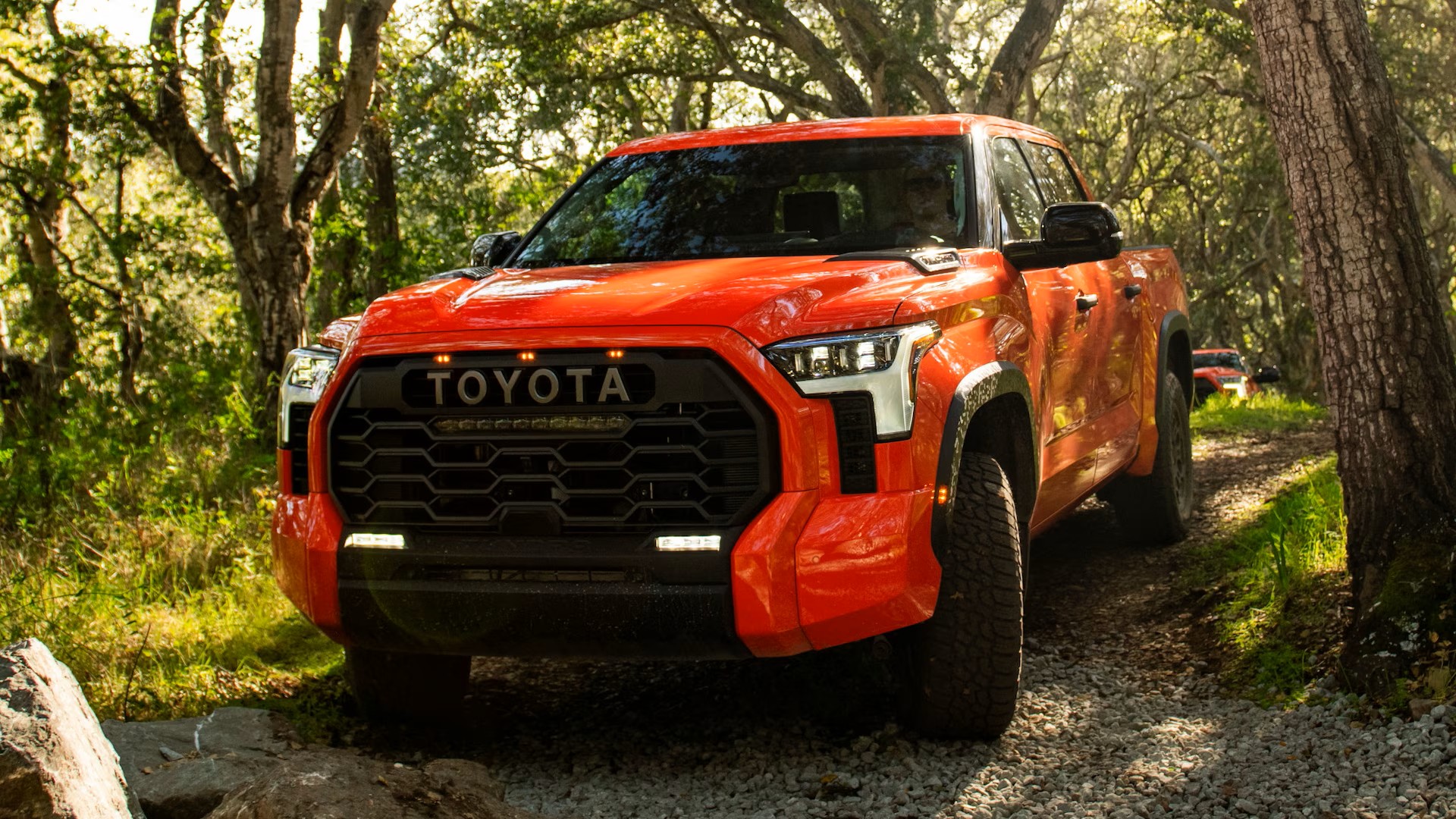When shopping for a pickup truck, most buyers focus on obvious factors: horsepower, towing capacity, payload, and of course, the sticker price.
But what many overlook is the total cost of ownership (TCO)—a long-term view that includes fuel costs, insurance, depreciation, maintenance, repairs, and even resale value.
While some trucks may seem affordable up front, they can end up costing much more over time. Conversely, others with higher MSRPs may surprise you by saving thousands over the life of ownership.
Understanding TCO is essential because trucks are built for long-term use. Whether it’s daily commuting, weekend hauling, or full-time job site duty, these vehicles see more wear and tear than the average sedan or crossover. That makes reliability, fuel efficiency, and retained value even more critical.
In this guide, we’ll explore five trucks with the lowest total cost of ownership—vehicles that combine smart engineering, low maintenance needs, and solid resale performance.
After that, we’ll look at five trucks with the highest long-term ownership costs, where premium features or poor reliability lead to inflated expenses over time.
If you’re planning to keep your truck for 5–10 years or rack up serious miles, these insights will help you make a smarter, more financially sound choice.
Also Read: 5 Used Cars With Zero Rod Knock Risk and 5 That Are Engine Time Bombs
5 Trucks With Lowest Total Cost of Ownership
When it comes to trucks, the initial price tag only tells part of the story. Whether you’re a contractor, weekend warrior, or daily commuter, owning a truck means factoring in much more than just monthly payments.
Fuel costs, maintenance needs, insurance rates, repair frequency, and depreciation all play into the total cost of ownership (TCO)—a figure that often determines whether a truck is a money-saver or a money-pit in the long run.
This section focuses on five pickup trucks that excel in long-term value. These aren’t necessarily the cheapest trucks you can buy upfront, but they have a proven track record of being low-cost to maintain, fuel-efficient for their class, and reliable enough to avoid expensive breakdowns.
They also tend to hold their value better than the competition, minimizing depreciation—one of the biggest hidden costs in vehicle ownership.
We’ve chosen these five models based on data from ownership cost tracking services, reliability studies, real-world owner feedback, and fuel economy ratings.
They represent a mix of compact, midsize, and full-size options, all of which have demonstrated exceptional long-term performance and minimal financial surprises.
This list is particularly useful for buyers who plan to keep their trucks beyond the typical lease cycle—those looking at 5 to 10 years of ownership, where value retention and long-term durability become essential.
If your goal is to minimize overall expenses while still owning a capable and dependable vehicle, these trucks deserve a serious look.
Let’s break down each of these trucks and explore what makes them stand out as cost-efficient champions over the long haul.
1. Toyota Tacoma
The Toyota Tacoma is often hailed as the gold standard in the midsize truck segment, and for good reason. While it may not always top the charts in horsepower or luxury, it excels in one area that matters most to long-term owners: total cost of ownership.
With its near-legendary reputation for durability, strong resale value, and low maintenance needs, the Tacoma is consistently one of the least expensive trucks to own over time.
One of the biggest factors contributing to the Tacoma’s low TCO is its exceptional reliability. According to sources like J.D. Power and Consumer Reports, the Tacoma frequently ranks among the most dependable pickups on the market.
Major mechanical problems are rare, and it’s not uncommon to see Tacomas still running strong well past 200,000 miles. This dependability reduces repair bills and downtime, keeping overall ownership costs low.
Another major contributor is depreciation—or lack of it. The Tacoma holds its value better than almost any other truck. Resale values remain high even after five or more years, especially for off-road-focused trims like the TRD Off-Road and TRD Pro.
That strong resale performance means fewer losses if you choose to trade in or sell the vehicle later on.
Fuel economy is competitive for its class, especially with the four-cylinder engine and two-wheel-drive configuration. Insurance costs are moderate, and maintenance—while not the cheapest in its segment—is predictable and infrequent.
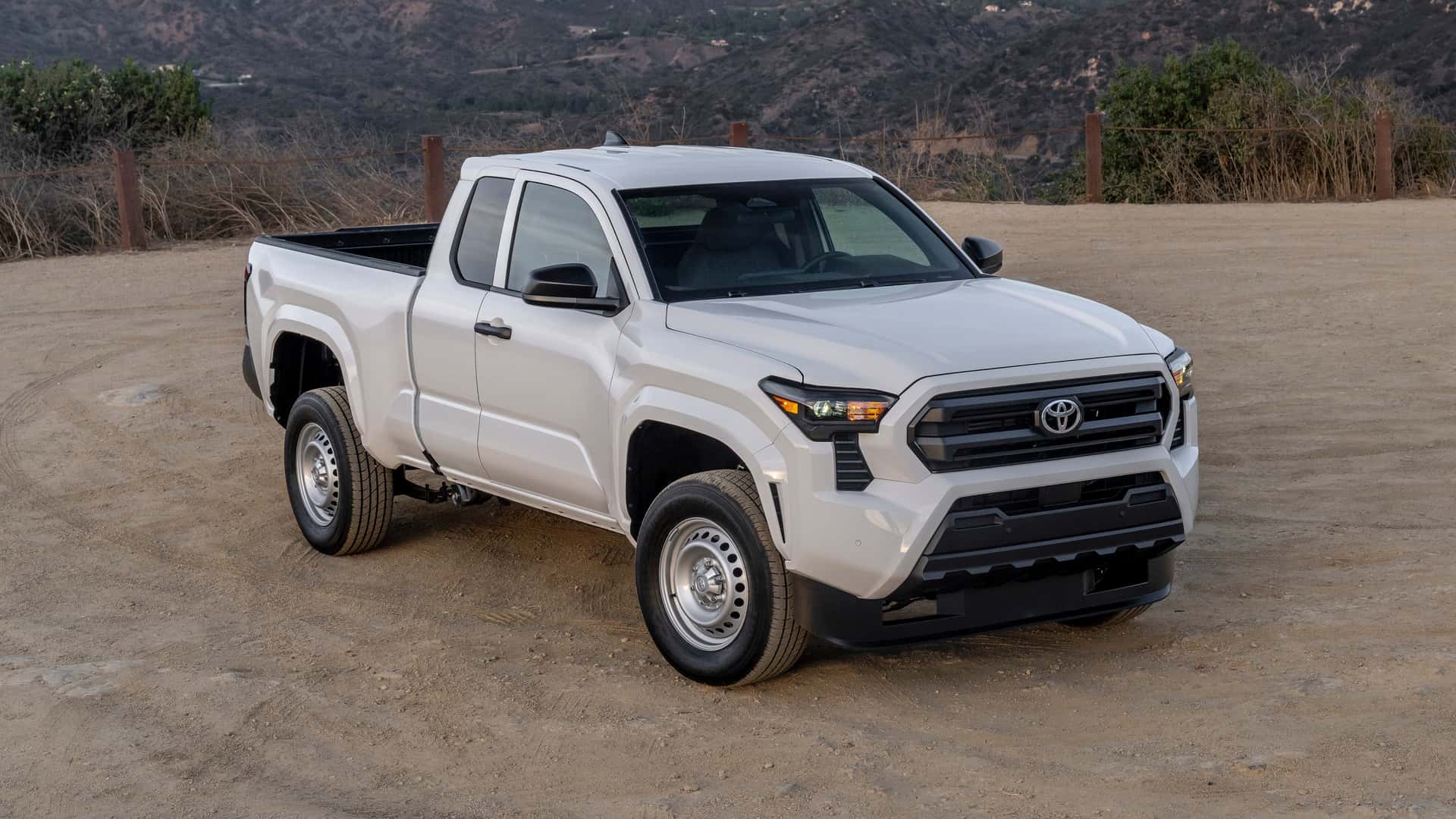
Toyota’s widespread dealer network and reputation for service simplicity further help minimize long-term expenses.
While it may lack some of the plush refinement or cutting-edge tech of newer rivals, the Tacoma makes up for it with bulletproof engineering and time-tested components.
For buyers looking to stretch every dollar and keep their vehicle for the long haul, few options can match the Tacoma’s overall value proposition.
In short, if you’re seeking a low-drama, high-value midsize pickup, the Toyota Tacoma remains one of the smartest investments on the road today.
2. Ford Maverick
The Ford Maverick has redefined what a truck can be in today’s market. As a compact, unibody pickup with a hybrid powertrain option, it offers something no other truck currently does: exceptional fuel efficiency, low entry pricing, and minimal long-term costs.
For drivers prioritizing a low total cost of ownership, the Maverick is a clear standout.
The biggest TCO advantage lies in its standard hybrid engine, which delivers an EPA-estimated 42 mpg city and 33 mpg highway. Those figures blow past any other pickup, even compact rivals.
Over a typical 5-year ownership span, that fuel efficiency can save thousands of rupees or dollars—particularly for city drivers or those using their truck for commuting.
The starting price is also refreshingly low. At launch, the Maverick’s base trim was priced under $25,000, and even well-equipped versions remain below the cost of most full-size or midsize competitors.
Yet, it doesn’t feel “cheap.” The Maverick comes standard with features like an 8-inch touchscreen, Apple CarPlay, and a surprisingly roomy cabin for its size.
Beyond purchase price and fuel economy, the Maverick benefits from low maintenance costs.
Hybrid systems generally have fewer wear-and-tear components than traditional gas-only drivetrains, and Ford’s 2.5-liter hybrid engine is already proving reliable. Insurance premiums are also relatively modest thanks to its compact size and solid safety ratings.
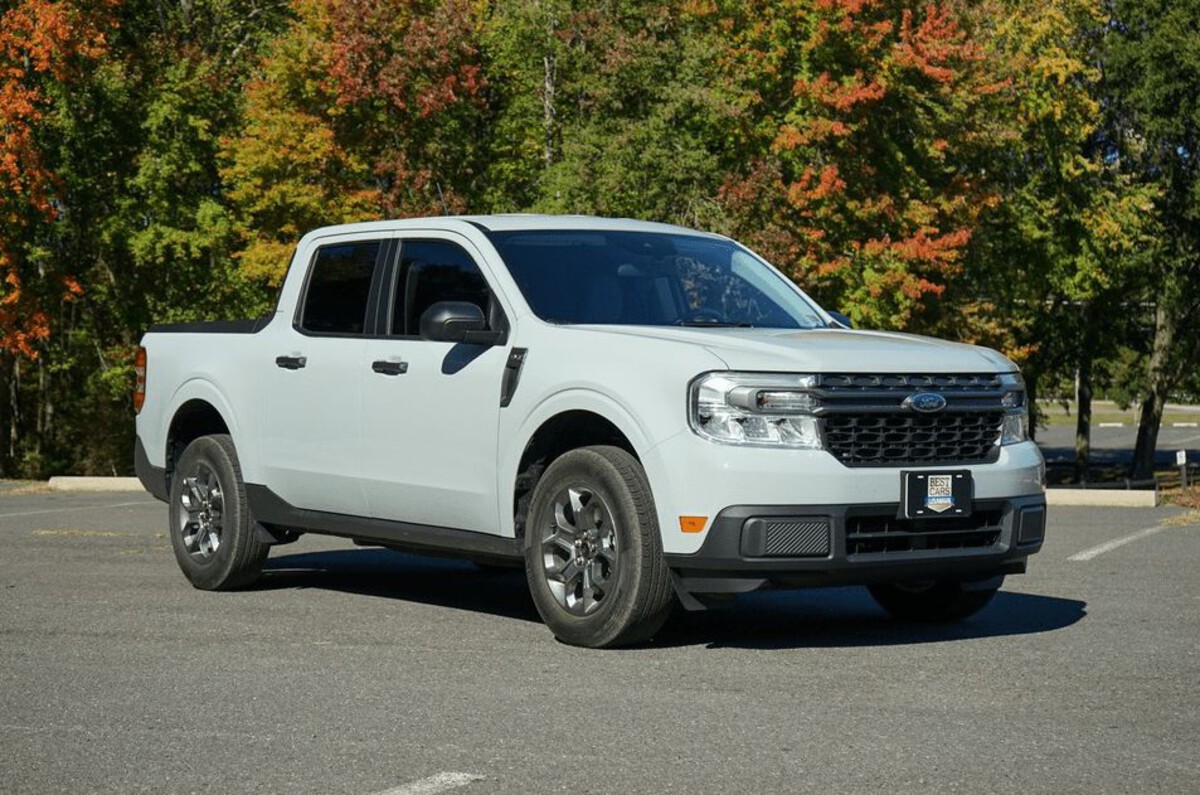
Depreciation is minimal so far—partly because demand still outpaces supply. Early Maverick buyers are seeing strong resale values, and its practical appeal suggests long-term demand will remain healthy, especially for fleet, urban, and lifestyle buyers.
While it’s not designed for heavy-duty towing or extreme off-road use, the Maverick isn’t trying to compete with full-size workhorses. It’s a cost-conscious, urban-friendly utility vehicle for people who need truck function without the financial burden.
All in all, the Ford Maverick flips the traditional truck ownership model on its head. For those who value low fuel costs, manageable maintenance, and outstanding versatility, it’s one of the most affordable trucks to own—both today and over the long run.
3. Chevrolet Colorado (4-Cylinder)
The Chevrolet Colorado, particularly in its 4-cylinder configuration, is a strong contender for anyone seeking a midsize truck with a low total cost of ownership.
While the V6 and diesel options add performance and towing ability, it’s the base 2.7L turbo 4-cylinder that offers the most value over time by balancing fuel efficiency, capability, and low maintenance.
The latest-generation Colorado brings significant upgrades in both design and functionality. The turbocharged four-cylinder engine now serves as the standard powerplant across the lineup and offers a solid combination of 310 horsepower and good fuel economy (up to 20 mpg city and 25 mpg highway).
That’s excellent for a midsize truck, especially one that doesn’t sacrifice towing ability—this engine can still haul over 7,000 pounds in the right configuration.
What makes the 4-cylinder Colorado especially appealing is its low ownership overhead. Compared to V6 and diesel versions, the 4-cylinder has fewer parts to maintain, better fuel efficiency, and lower insurance rates.
Routine maintenance is straightforward, and Chevrolet’s dealer network ensures affordable parts and service availability across North America.
Depreciation is moderate, but resale value has improved with the latest generation. Models equipped with the turbo-four engine are expected to retain value better, especially as buyers begin to prioritize efficiency alongside utility.
Also, because the Colorado shares many mechanical components with the larger Silverado and GMC Canyon, replacement parts and repair expertise are widely accessible, keeping long-term costs low.
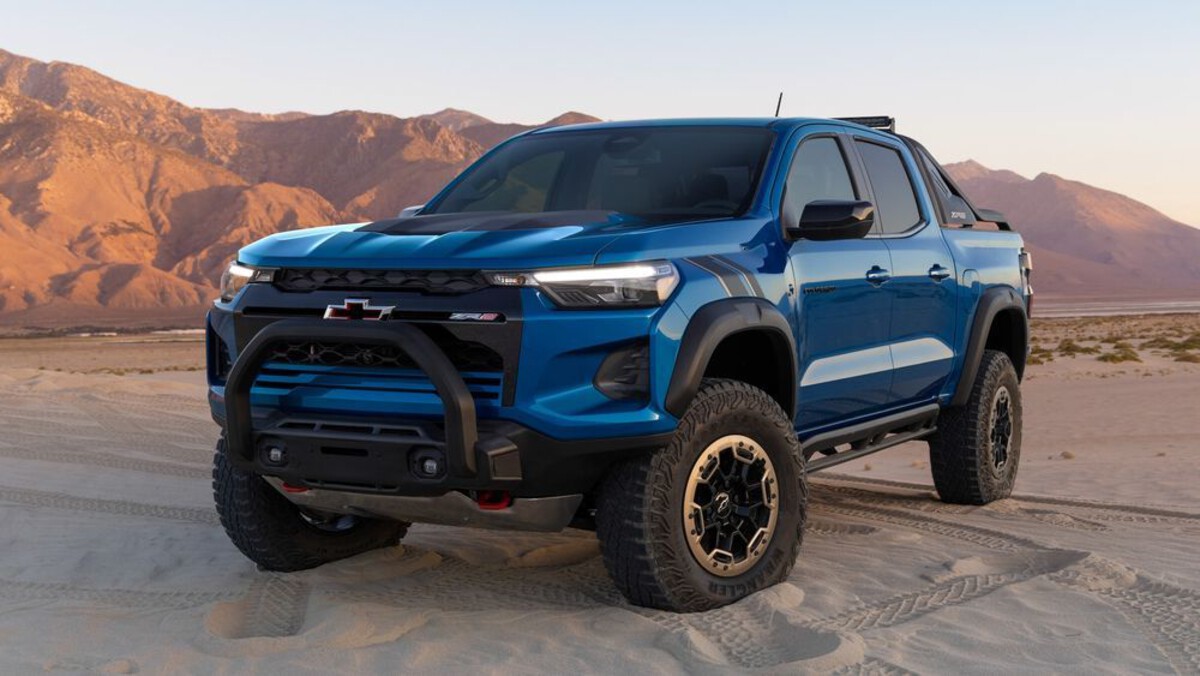
Additionally, GM’s warranties—like a 5-year/60,000-mile powertrain warranty—provide peace of mind during the early years of ownership, a key factor in managing TCO.
While the interior isn’t as flashy as some competitors, and high-end trims can drive up the cost, the base and mid-level models hit a sweet spot for those who want a reliable workhorse without unpredictable expenses.
Suppose you’re looking for a midsize truck that offers solid performance, efficiency, and affordability. In that case, the Chevrolet Colorado with the 4-cylinder engine is a compelling choice for keeping total ownership costs under control.
4. Ford F-150 Hybrid (PowerBoost)
The Ford F-150 Hybrid, known as the PowerBoost, is a rare breed in the truck world—a full-size pickup that delivers real-world fuel savings without sacrificing performance.
For buyers seeking heavy-duty capability and advanced tech without paying for it every week at the fuel pump, the F-150 Hybrid represents one of the smartest TCO choices in the full-size segment.
The PowerBoost system pairs a 3.5-liter EcoBoost V6 with a 44-horsepower electric motor, creating a combined output of 430 horsepower and 570 lb-ft of torque.
That’s more than enough for towing, hauling, or off-roading, yet it also achieves an EPA-estimated 24 mpg city and 24 mpg highway in 2WD form—class-leading fuel economy for a full-size pickup.
Over a typical 5–10 year ownership period, this hybrid drivetrain can save thousands in fuel costs compared to gas-only rivals. But the savings don’t stop at the pump.
The F-150 Hybrid also includes Ford’s Pro Power Onboard generator, which eliminates the need for an external generator on job sites or outdoor adventures—adding both convenience and cost-effectiveness.
In terms of reliability, the hybrid system has proven robust and smooth, with minimal additional maintenance compared to traditional gas engines.
Ford’s 8-year/100,000-mile warranty on hybrid components adds an extra layer of financial protection, making it a secure long-term investment.
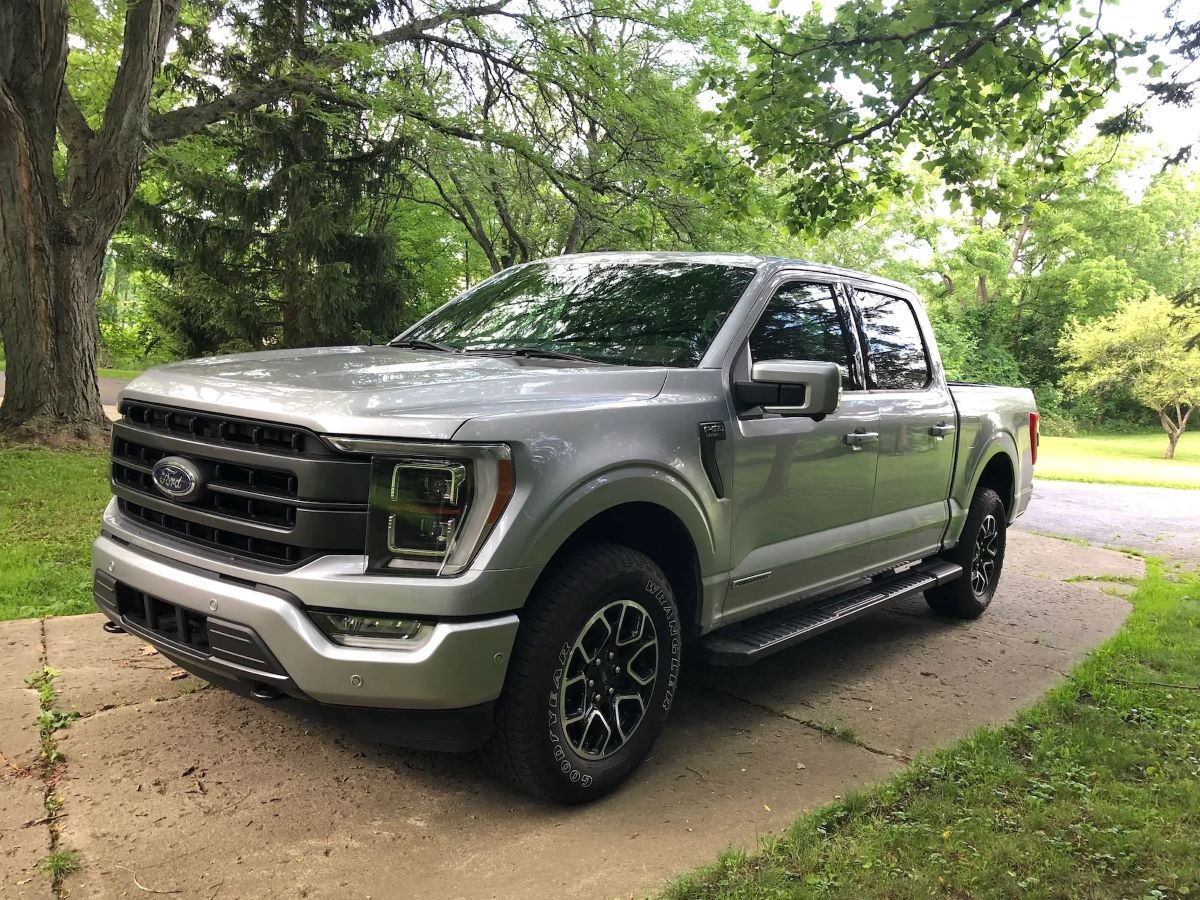
Resale values for the PowerBoost are strong, especially among tech-savvy buyers who value innovation and economy. Unlike some older hybrid trucks, the F-150 Hybrid isn’t a niche product—it’s widely available, well-equipped, and backed by Ford’s massive service network.
While the initial price is higher than base trims, the PowerBoost can actually cost less to own over time, especially for those driving higher annual mileage or using the truck for mixed commercial and recreational purposes.
If you want the full-size capability of an F-150 but don’t want to pay full-size fuel bills or get hit with heavy maintenance later, the PowerBoost hybrid is a forward-thinking, financially sound alternative.
5. Honda Ridgeline
The Honda Ridgeline often flies under the radar in the truck market, but when it comes to total cost of ownership, this midsize unibody pickup punches far above its weight.
Blending crossover comfort with pickup utility, the Ridgeline consistently delivers low operating costs, excellent reliability, and strong resale value—all of which make it a standout for cost-conscious buyers.
Unlike most body-on-frame trucks, the Ridgeline is built on a unibody platform shared with the Honda Pilot SUV, giving it a smoother ride, better fuel efficiency, and fewer wear-and-tear components.
It’s powered by a proven 3.5-liter V6 that produces 280 horsepower and returns a respectable 18 mpg city and 24 mpg highway—solid figures for a midsize pickup.
What truly sets the Ridgeline apart is its exceptional reliability record. Year after year, it earns top marks from Consumer Reports and J.D. Power for durability and owner satisfaction. Fewer trips to the shop mean lower repair bills and more time on the road.
Maintenance costs are also minimal thanks to Honda’s accessible service network and the truck’s straightforward mechanical design.
Another factor in the Ridgeline’s low TCO is its high resale value. Honda trucks tend to hold their value well, and the Ridgeline is no exception.
It appeals to a specific audience—those who want pickup versatility without the harsh ride or fuel economy tradeoffs of a traditional truck—which keeps used demand strong.
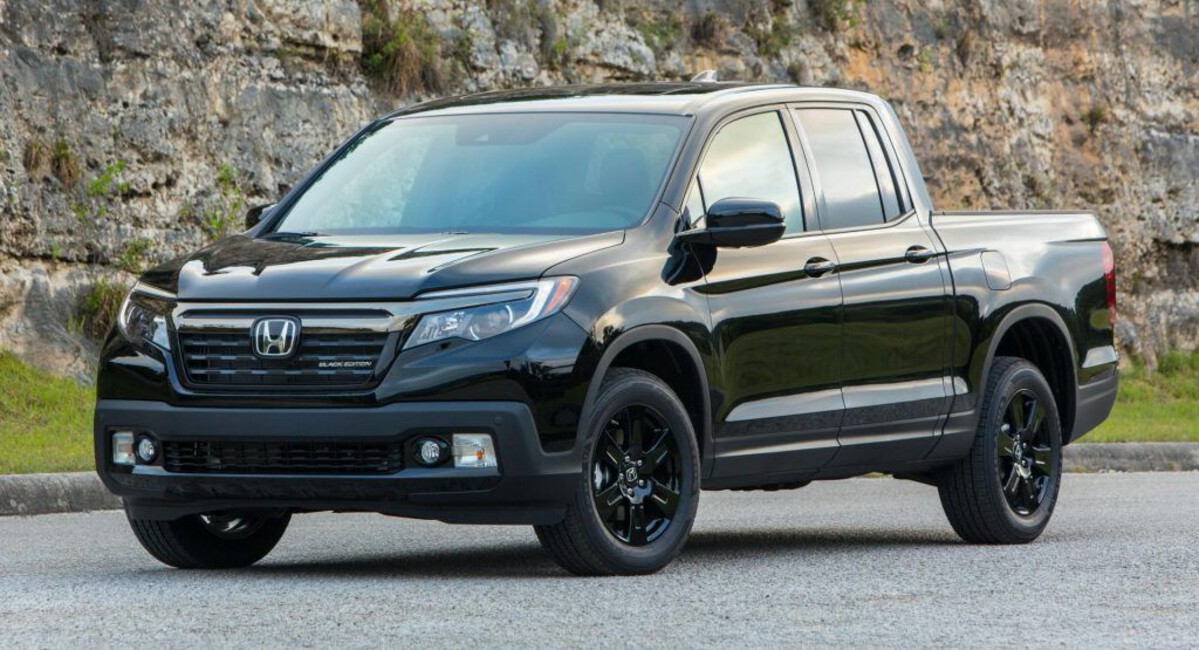
Insurance premiums for the Ridgeline are also typically lower than competitors because of its excellent safety ratings, unibody structure, and lower risk profile.
Plus, its standard features—including Honda Sensing safety tech, a lockable in-bed trunk, and dual-action tailgate—add convenience without expensive add-ons.
While the Ridgeline may not win over hardcore off-roaders or heavy haulers, it excels at urban and suburban versatility—and it’s arguably the most user-friendly truck in the segment.
For homeowners, light-duty users, or anyone prioritizing low ownership costs and daily comfort, the Ridgeline is one of the smartest long-term investments in the truck world.
5 Trucks With Highest Total Cost of Ownership
While pickup trucks are known for their ruggedness, utility, and versatility, not all of them are great long-term investments.
In fact, some models that boast impressive power, luxury features, or off-road capability come with a hidden price tag: a high total cost of ownership (TCO).
For buyers who don’t look beyond the initial sticker price, these trucks can become financial burdens over time due to rapid depreciation, high fuel consumption, costly repairs, or steep insurance premiums.
This list focuses on five trucks that are among the most expensive to own, not just because of how much they cost upfront, but because of the long-term expenses they incur across 5 to 10 years of ownership.
These vehicles often attract buyers with flashy features or premium badges, but they may not hold their value well, and they frequently come with higher operating costs than the segment average.
We’re not saying these trucks are “bad”—in fact, many of them are excellent in terms of performance or comfort.
But for buyers concerned with the bottom line, these are the models where luxury, complexity, or inefficient engineering adds thousands to long-term ownership.
Factors like poor fuel economy, pricey parts, low reliability ratings, and weak resale performance all play a role.
If you’re considering a truck purchase and intend to maximize long-term value, these five should be approached with caution unless their unique advantages justify the added cost.
Let’s take a closer look at the trucks that look good at first but get expensive fast—starting with the RAM 1500 TRX.
1. RAM 1500 TRX
The RAM 1500 TRX is a true marvel of modern truck engineering. With a supercharged 6.2-liter HEMI V8 pumping out 702 horsepower, it’s one of the most powerful and exhilarating pickups ever built.
Designed to rival the Ford Raptor in off-road performance and brute strength, the TRX is an absolute thrill to drive. But when it comes to total cost of ownership, this beast exacts a steep toll—both at the pump and beyond.
Let’s start with fuel economy, or rather, the lack of it. The TRX returns an EPA-estimated 10 mpg city and 14 mpg highway, making it one of the least fuel-efficient vehicles on the road, let alone in the truck segment.
Daily driving—even moderate commutes—can result in fuel expenses that quickly add up to thousands per year, especially in regions with high fuel prices.
Then there’s the maintenance and repair cost. The TRX uses specialized parts and high-performance components that aren’t cheap to replace.
From reinforced suspension elements to oversized tires and a performance-tuned drivetrain, everything about the TRX is more complex and costly to maintain than a standard half-ton pickup.
Depreciation is another weak point. While the TRX initially commanded high demand, interest has waned with the rise of electrified alternatives and soaring fuel costs.
That means resale values are starting to dip—especially as many buyers realize the high operating expenses.
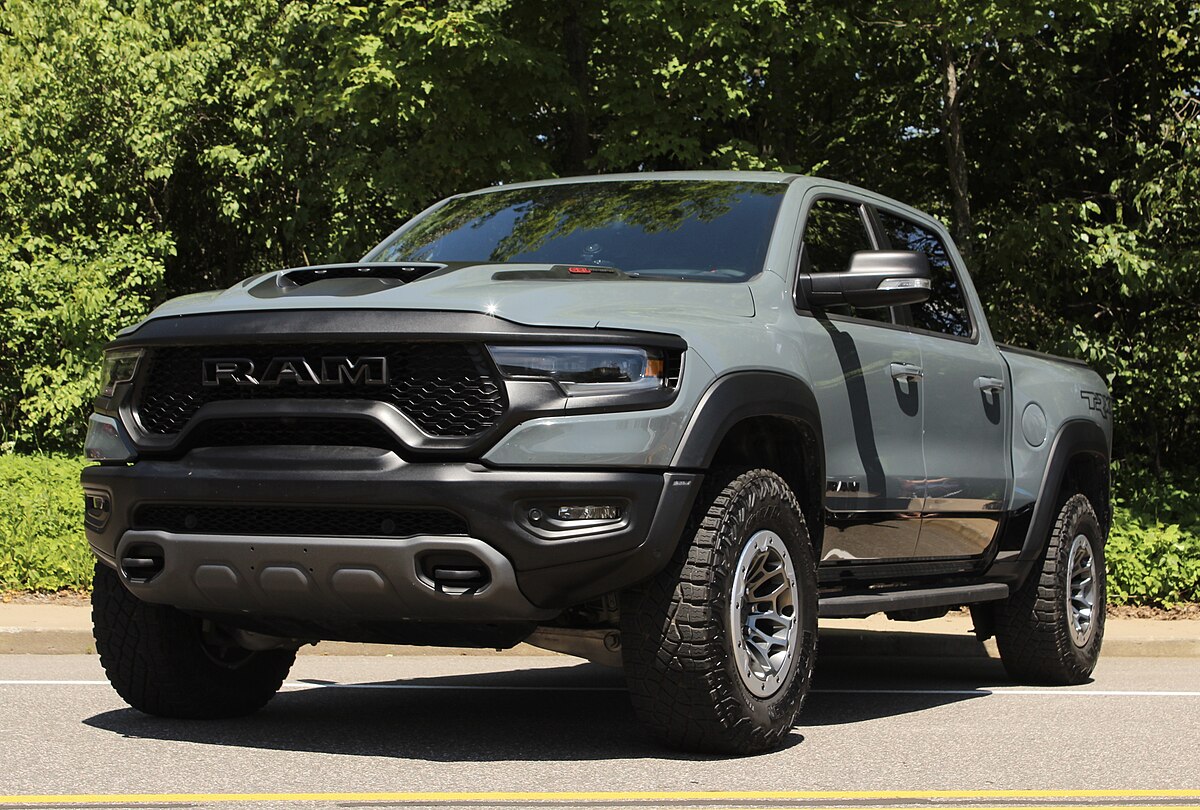
Insurance premiums for the TRX are significantly higher than average, largely due to its powerful engine, aggressive styling, and classification as a performance vehicle.
Combine that with the truck’s high MSRP—often exceeding $80,000—and you’ve got one of the most expensive trucks to own over a 5-year period.
Of course, the TRX wasn’t built to be practical. It’s designed to be a showstopper, a toy for enthusiasts who want to roar through dunes and turn heads.
But if your focus is long-term value or manageable costs, this is a truck that’s better appreciated from afar than owned daily.
2. Nissan Titan XD
The Nissan Titan XD was launched with big ambitions: to bridge the gap between light-duty pickups like the F-150 and heavy-duty giants like the Ram 2500.
With a larger frame, a beefy V8 engine, and optional diesel (in earlier years), it seemed like a value alternative to domestic workhorses.
However, in reality, the Titan XD has become one of the least cost-efficient trucks to own, due to poor resale value, high maintenance costs, and limited aftermarket support.
At the heart of the issue is the Titan XD’s confused positioning. It’s not quite a heavy-duty truck, but it’s also bulkier and thirstier than standard half-ton competitors.
Its 5.6-liter Endurance V8, while powerful, is notoriously fuel-hungry, returning just 14–15 mpg combined depending on trim and drivetrain. Over time, that adds up to significant fuel costs—especially compared to lighter, more efficient V6 or hybrid-powered rivals.
Another problem lies in depreciation. Nissan’s full-size trucks have struggled to maintain strong resale value, and the Titan XD is no exception.
Due to limited market appeal and declining sales, used prices have dropped considerably, resulting in steeper losses for owners who plan to resell within five to seven years.
Maintenance and parts availability also contribute to high TCO. Since Nissan no longer offers a diesel variant and hasn’t significantly updated the XD’s platform in recent years, finding qualified service and affordable replacement parts can be difficult.
Plus, with fewer on-road units compared to Ford, GM, and Ram, aftermarket support and community knowledge are relatively scarce, which can further drive up long-term ownership costs.
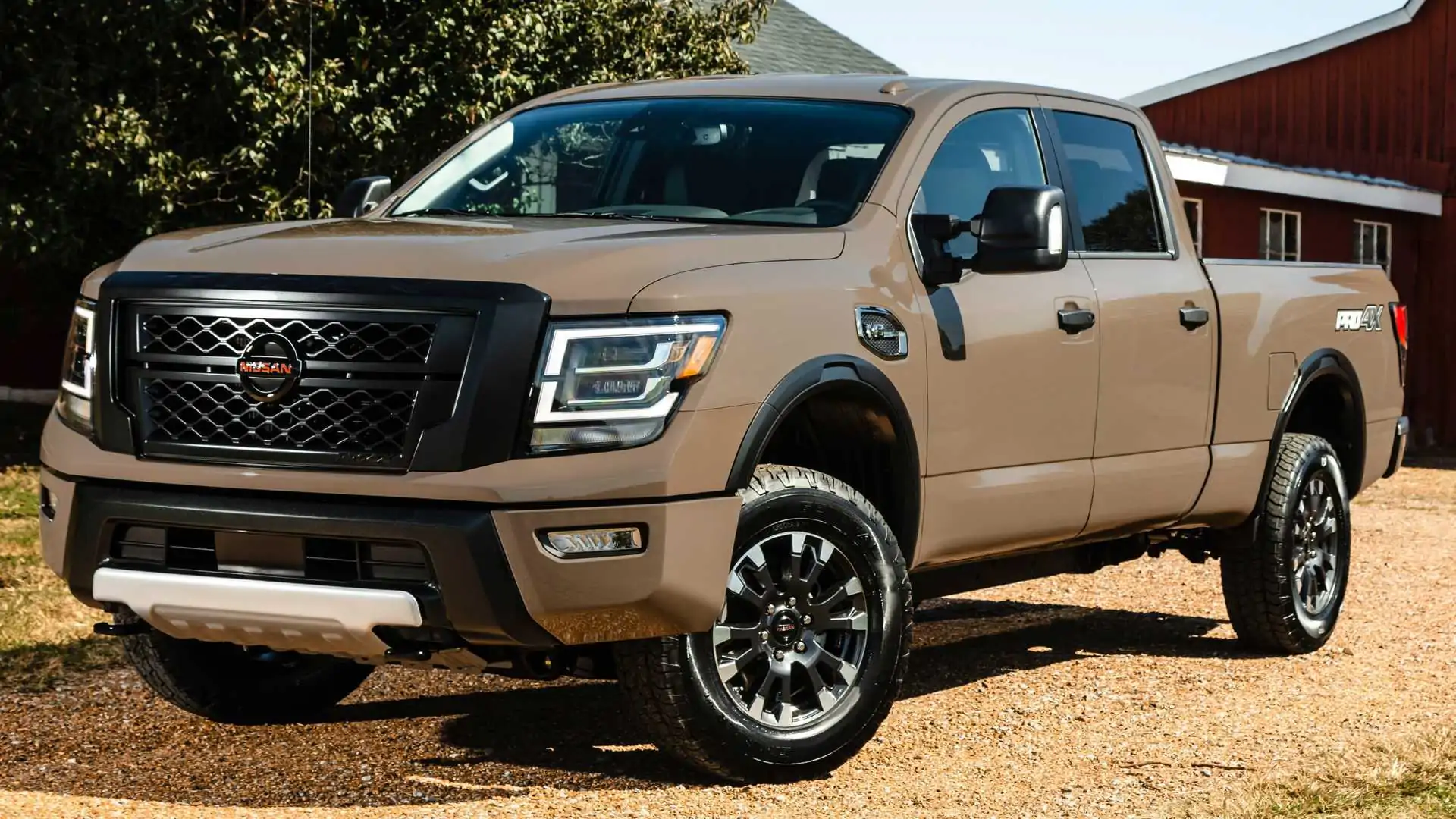
Insurance premiums aren’t especially low either, especially considering the truck’s large footprint and limited safety tech compared to newer competitors.
And with no hybrid or high-efficiency alternative, there’s little relief in sight for buyers seeking long-term savings.
While the Titan XD still has its fans—especially for its towing capacity and rugged feel—it’s hard to ignore the financial drag it places on owners over time.
For those prioritizing cost control and long-term value, this is one truck that feels outdated and overpriced for what it delivers.
3. GMC Sierra 1500 Denali Ultimate
The GMC Sierra 1500 Denali Ultimate is one of the most luxurious and tech-packed pickups on the market.
With features like massaging leather seats, a premium Bose audio system, Super Cruise hands-free driving, open-pore wood trim, and a 6.2-liter V8, this truck feels more like a luxury SUV than a workhorse.
But while it dazzles with comfort and power, it’s also one of the most expensive trucks to own long-term, especially when total cost of ownership is considered.
First, the initial cost is sky-high. The Denali Ultimate trim often lands north of $80,000, placing it well into luxury car territory.
This alone inflates depreciation risk, and while GMCs generally hold value well, the premium paid for high-end features tends to drop quickly on the used market. That means you’re losing more value per mile than you would in a lower trim or more utilitarian model.
Then there’s the fuel consumption. The 6.2-liter V8 delivers strong performance, but it returns just 14–16 mpg combined in real-world driving.
Owners who frequently commute or tow will see fuel costs climb steeply, especially when using premium-grade gasoline as recommended.
Maintenance and repair costs are also higher than average. The Sierra Denali Ultimate comes packed with advanced electronics and luxury-grade components, which are more expensive to repair or replace if anything fails.
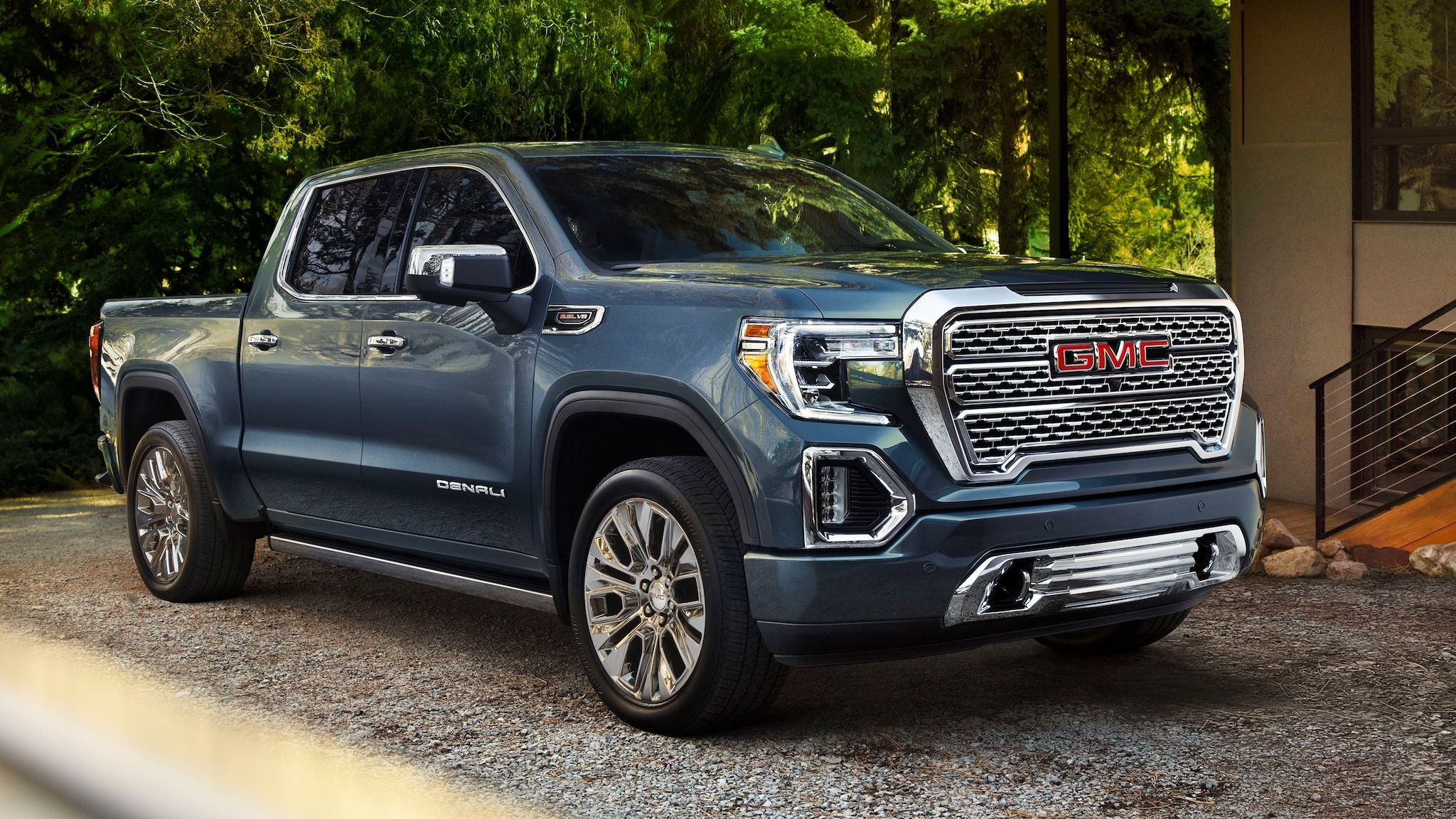
Air-conditioned seats, digital dashboards, and adaptive suspension systems often require dealer-level diagnostics, which can lead to costly out-of-warranty repairs.
Insurance premiums also tend to be elevated due to the truck’s high value, extensive equipment, and replacement costs.
Combined with higher registration and tax fees in some regions, owning the Denali Ultimate can feel more like maintaining a European luxury vehicle than a mainstream pickup.
The Denali Ultimate certainly has its audience—those who want all the comfort of a Cadillac with the utility of a truck. But if you’re watching long-term costs, this truck represents the high end of the TCO spectrum.
4. Toyota Tundra i-FORCE MAX
The Toyota Tundra i-FORCE MAX was introduced with high expectations. As Toyota’s first full-size hybrid pickup, it promised improved fuel economy, massive torque, and modern tech—all backed by the brand’s legendary reliability.
And while it delivers on performance with 437 horsepower and 583 lb-ft of torque, the Tundra Hybrid also brings with it surprisingly high long-term ownership costs, making it one of the pricier trucks to maintain over time.
Let’s begin with the hybrid system itself. While Toyota hybrids are known for dependability, the i-FORCE MAX powertrain is a twin-turbocharged V6 paired with an electric motor—a much more complex setup than the naturally aspirated V8 it replaced.
This added complexity can translate into higher maintenance and repair costs down the line, especially once the warranty expires. The 10-speed automatic transmission, while smooth, has also proven more expensive to service than simpler alternatives.
Fuel economy is better than the gas-only Tundra, but still only marginally improved, with a combined EPA rating of 20–22 mpg, depending on configuration.
In real-world testing, results can fall short of these numbers, meaning the hybrid powertrain may not deliver significant savings at the pump—especially compared to competitors like the Ford F-150 PowerBoost.
The initial cost of the i-FORCE MAX trims—especially the TRD Pro or Capstone editions—often exceeds $70,000, pushing the truck into premium territory.
Unfortunately, resale values haven’t held as well as expected, with depreciation setting in faster than some anticipated, likely due to the high price and relatively new powertrain, which may concern long-term buyers.
Insurance rates are also higher, particularly for trims with off-road packages and luxury features.
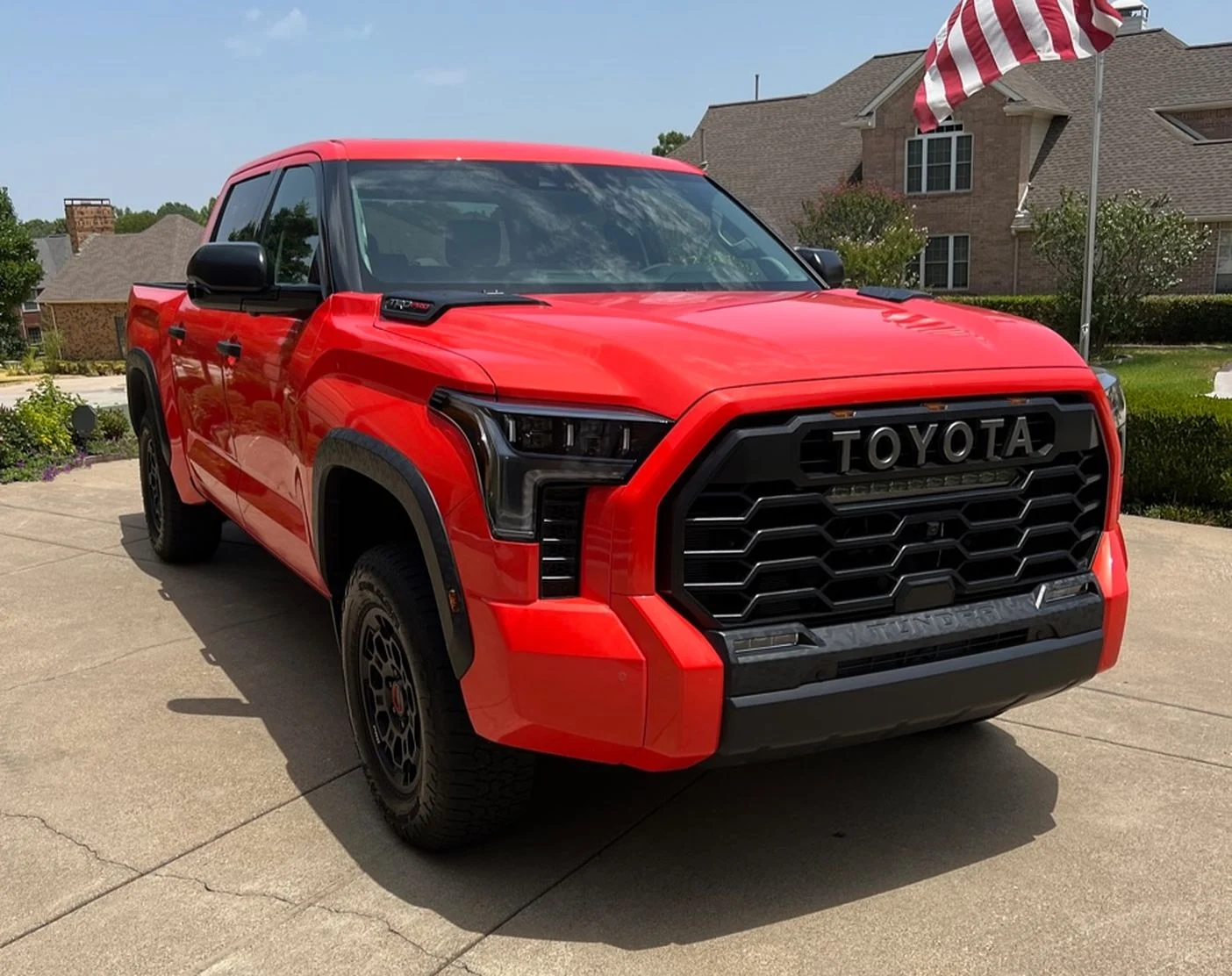
Combined with Toyota’s expensive OEM parts and the increased likelihood of needing specialized hybrid repairs, the Tundra Hybrid quickly moves into the “high TCO” category, despite its green credentials.
While the i-FORCE MAX Tundra is powerful, tech-rich, and capable, buyers expecting it to be a cost-saving hybrid over time may be in for a surprise. It’s a strong performer, but not a budget-friendly one—especially over a 5–10 year ownership cycle.
5. Chevrolet Silverado 1500 3.0L Duramax
On paper, the Chevrolet Silverado 1500 with the 3.0L Duramax turbo-diesel engine looks like a cost-efficient dream.
It delivers impressive fuel economy for a full-size truck—up to 24 mpg city and 29 mpg highway—along with excellent towing capability and a smooth ride.
But dig deeper, and you’ll find that the diesel Silverado’s total cost of ownership (TCO) can be surprisingly high, especially for the average truck owner.
First, let’s talk about upfront cost. The Duramax diesel option can add $1,500–$2,500 or more to the base price of the Silverado, depending on the trim.
And while diesel engines are often praised for longevity, that durability comes with higher routine maintenance costs. Oil changes, fuel filter replacements, and diesel exhaust fluid (DEF) refills are all more expensive than on a gas truck.
Then there’s the issue of repair costs. If something does go wrong outside of warranty, diesel repairs are often significantly more costly than gas engine fixes.
Turbochargers, emissions systems (especially particulate filters), and injectors can add up quickly in both parts and labor.
While the 3.0L Duramax is relatively new, its complex emissions control systems raise concerns for long-term ownership, especially for drivers who don’t do a lot of highway miles.
Short trips and stop-and-go driving are known to increase the chances of diesel particulate filter (DPF) issues, which can require expensive cleanings or replacements.
Depreciation is also steeper than expected. While diesel pickups once held their value exceptionally well, today’s shifting market—with stricter emissions rules and growing electrification—has reduced demand for light-duty diesels. As a result, the Duramax Silverado doesn’t retain its value quite as well as many gas-powered rivals.
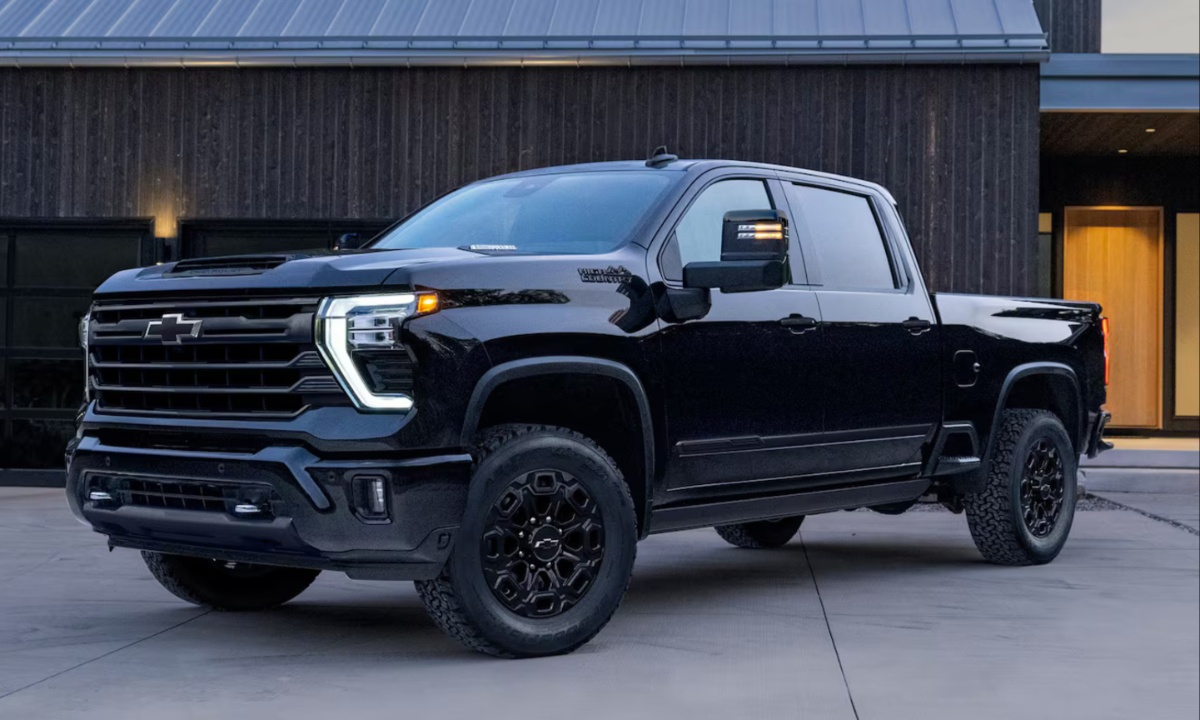
Insurance costs are moderate, but they don’t compensate for the added fuel system complexity, higher servicing intervals, and rising diesel fuel prices in many regions.
In summary, the Silverado 1500 Duramax excels in towing, comfort, and efficiency under the right conditions.
But unless you’re racking up high highway mileage, the long-term costs may outweigh the savings—especially when compared to newer hybrids or efficient gas-powered alternatives.
In the world of pickup trucks, the initial sticker price is only the beginning. As we’ve seen, total cost of ownership (TCO) paints a much fuller—and sometimes surprising—picture.
While some trucks may seem affordable or desirable upfront, the real financial impact unfolds over the years through fuel costs, depreciation, maintenance, insurance, and repairs.
On the low TCO side, trucks like the Toyota Tacoma, Ford Maverick, and Honda Ridgeline demonstrate how intelligent design and proven reliability can pay off big over time.
These models offer consistent performance, predictable service costs, and strong resale value. Whether through hybrid efficiency, like in the Maverick and F-150 Hybrid, or traditional durability as in the Tacoma, they show that it’s possible to own a capable truck without draining your wallet year after year.
Conversely, the high TCO list highlights trucks that, while often impressive in power, comfort, or innovation, come with significant financial trade-offs.
The RAM 1500 TRX and GMC Sierra Denali Ultimate are luxurious and powerful, but their premium features drive up fuel, maintenance, and depreciation costs.
The Titan XD and Tundra i-FORCE MAX struggle with depreciation and niche appeal, while the Silverado Duramax, though efficient in theory, carries the long-term baggage of diesel complexity.
Ultimately, your best choice depends on your priorities. If you’re looking for a flashy ride with cutting-edge features and don’t mind higher costs, a high-TCO truck may suit you.
But for most buyers—especially those planning to keep their truck for the long haul—low-TCO models offer smarter financial stability without compromising usefulness.
The takeaway? Look beyond the brochure and monthly payment. Fuel economy, expected maintenance, depreciation trends, and long-term reliability should guide your decision just as much as horsepower and trim levels.
A truck that costs less to own isn’t just a good deal—it’s a long-term investment in peace of mind and financial confidence.
Whether you’re buying for work, family, or adventure, choosing the right truck with total cost in mind ensures that you get the most value from every mile.
Also Read: 5 Cars That Still Sell Above MSRP Used and 5 That Tank in Value

